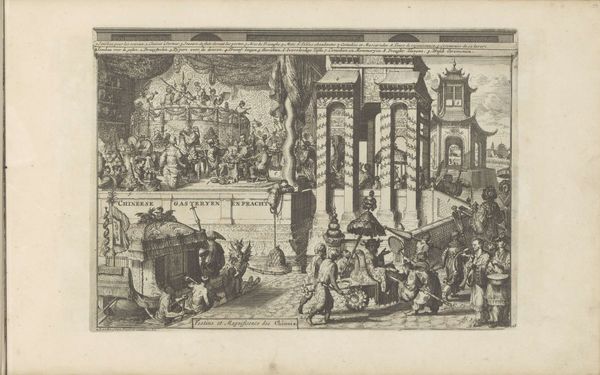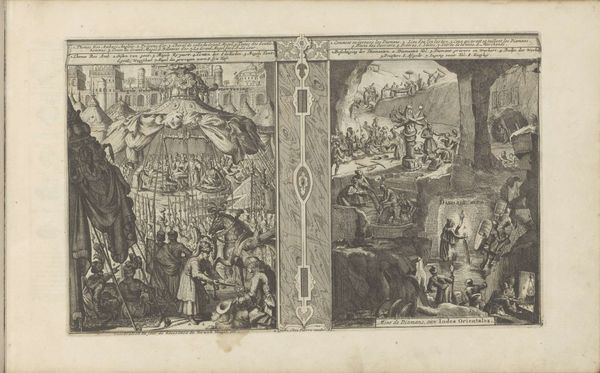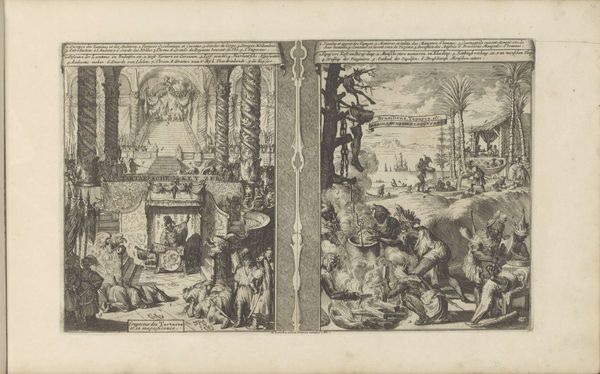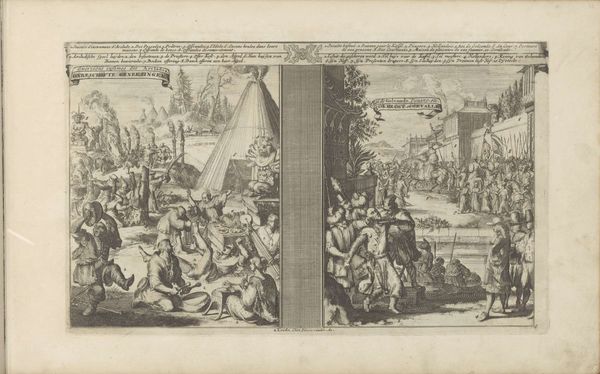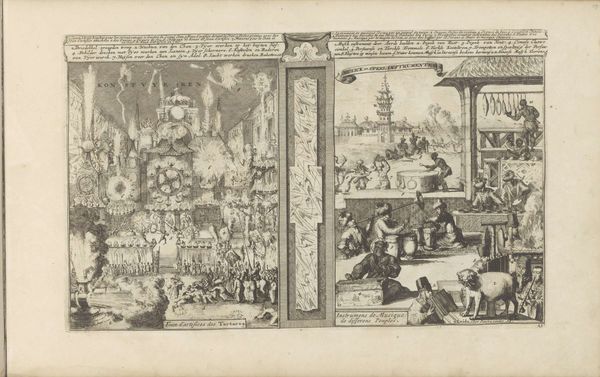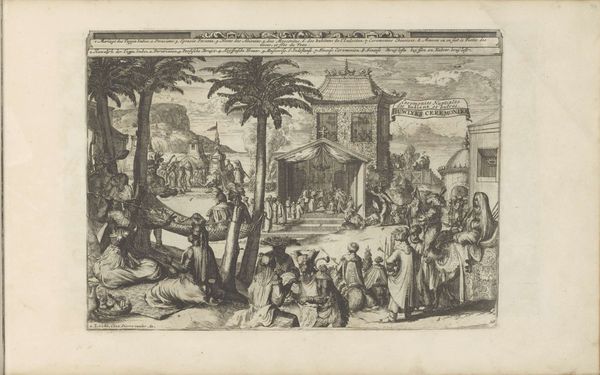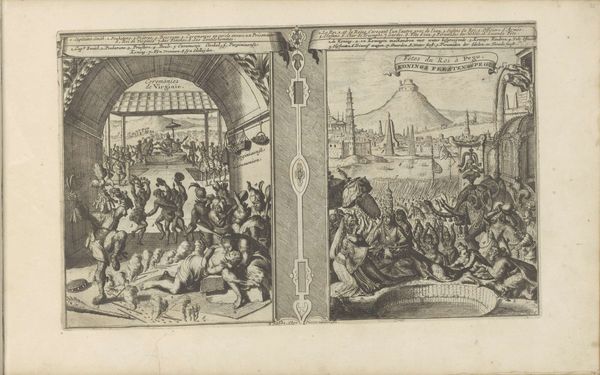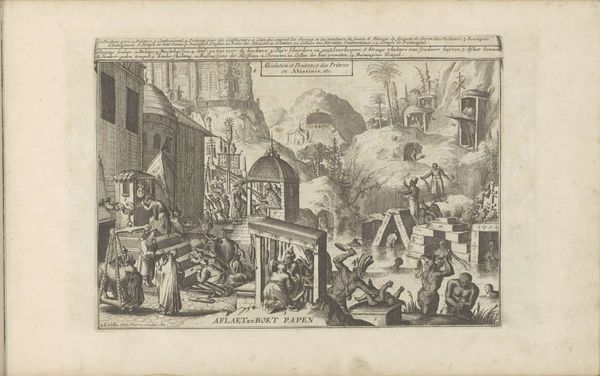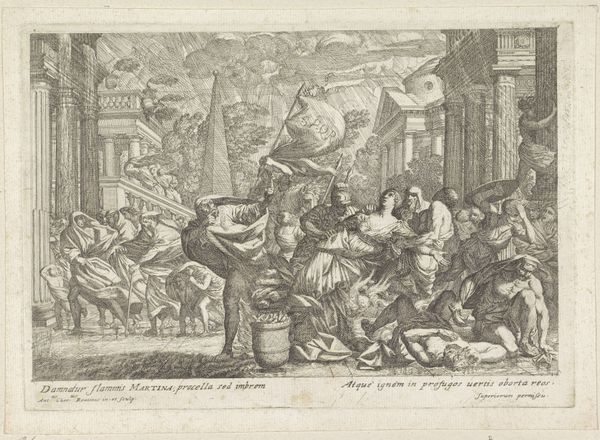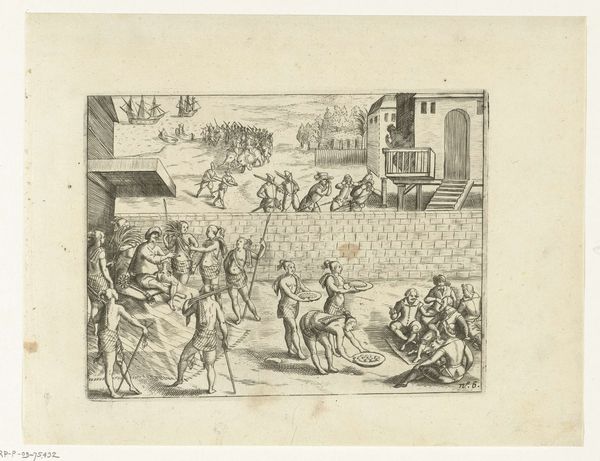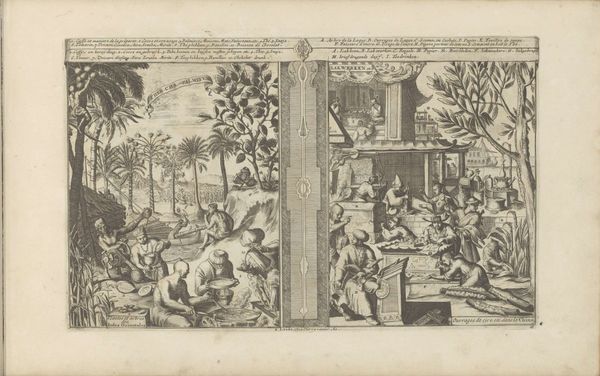
Japanse koophandel; Hof van de koning van de Calaminhans 1682 - 1733
0:00
0:00
romeyndehooghe
Rijksmuseum
print, ink, engraving
#
dutch-golden-age
# print
#
ink
#
history-painting
#
engraving
Dimensions: height 212 mm, width 342 mm
Copyright: Rijks Museum: Open Domain
Curator: Welcome. This print, held here at the Rijksmuseum, presents "Japanese Trade; The Court of the King of the Calamianes" created sometime between 1682 and 1733, most likely by Romeyn de Hooghe. Editor: Initially, I'm struck by how these twin scenes – the bustling trade juxtaposed with the formal court – feel deliberately composed to contrast and complement one another. Curator: Absolutely. The piece offers a visual narrative of colonial encounter and power dynamics during the Dutch Golden Age. It positions the Dutch traders and Japanese merchants engaged in economic transactions on one side and depicts an indigenous king in the Philippines receiving foreign visitors on the other, an allegory that visualizes international trade as cultural exchange while eliding histories of exploitation. Editor: The symbolic details! Note how the architecture shifts from functional to ornate as we move from the busy port to the royal court. I'm immediately thinking about the visual language used to construct ideas of civilization and exoticism. Curator: Yes, we can dissect this binary that's on display between the perceived industriousness of the traders and the perceived opulence and passivity of the Calamianes court. Whose story gets centered? How is their humanity being visualized? This engraving acts as a key cultural document reflecting and, arguably, perpetuating colonial perspectives of the period. Editor: And the materials—ink on paper—a medium readily reproduced and disseminated, amplified those ideologies across broader society. Curator: Precisely. Through a critical lens, the symbols and arrangements within this work unveil so much regarding power, race, and representation. Editor: Considering the period of creation, its legacy prompts uncomfortable but vital questions concerning ethical responsibilities and legacies. This extends not only to interpreting the past, but how we engage in present global dynamics. Curator: Looking carefully allows a deeper appreciation of its intricate details. Editor: Absolutely. Viewing and understanding historical artifacts such as this print enables necessary and progressive dialogue with ourselves and society.
Comments
No comments
Be the first to comment and join the conversation on the ultimate creative platform.
